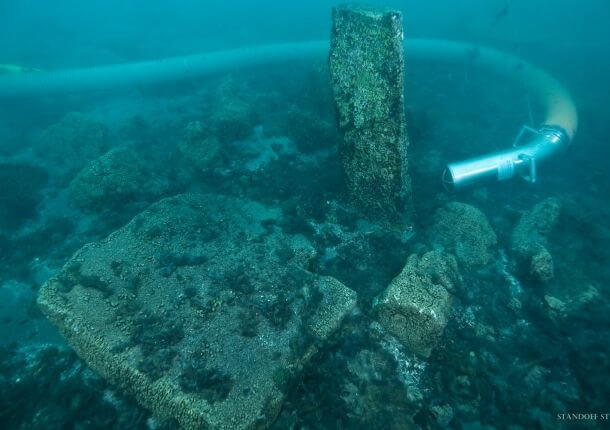The oceans are pretty fascinating and mysterious. We have no idea how big it is and how many species it houses. Apart from the huge marine ecosystem, the ocean bed is home to many ruins, which once stood on the land during their prime time.
Underwater excavations are difficult and expensive, so these investigations have only recently revealed many sunken cities around the globe. Some can be traced back through history, yet many remain mysterious and continue to spark people’s imagination as candidates for lost civilizations.
These historical ruins have now become a part of the marine ecosystem with thousands of marine lives resting in these structures. Here are 14 underwater ruins of lost civilizations you may not have heard of:
1. The Sunken City of Baiae, Italy
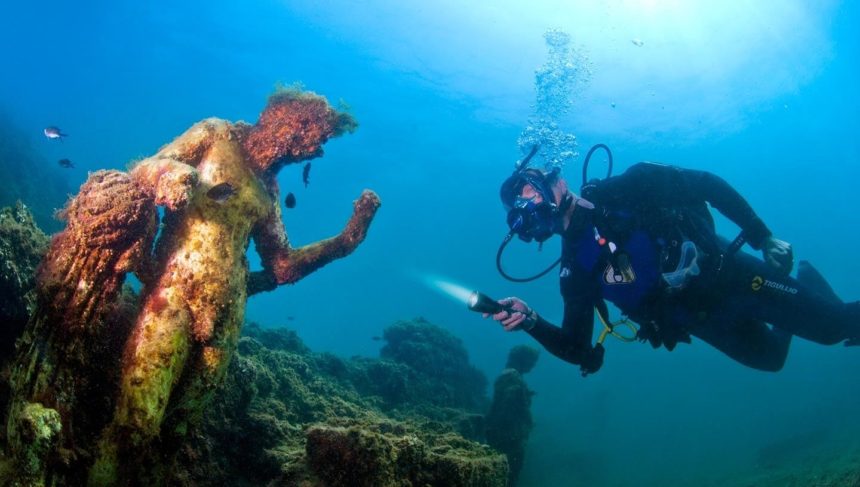
Baiae was an ancient city of Rome that was on the shore of the Gulf of Naples. The once great city was first and foremost a vacation spot for the wealthy and prestigious of Rome. Rich Roman emperors would build luxurious vacation villas along the water in Baiae and spend time eating and drinking to their heart’s contempt.
Notable figures such as; Julius Caesar, Nero, Augustus and Marcus Antonius frequented this vacation spot, and there are even rumors that the beautiful Cleopatra took up lodgement in this city at the time of Julius Caesar’s death in 44 BC.
Unfortunately, the good times were not to last and the city was sacked by Saracens in the 8th century and completely abandoned by 1500. Due to the volcanic activity of the area, the structure ultimately collapsed into the ocean
2. The Yonaguni Ruins, Japan

The submerged structures scattered on the seafloor are located off the Japanese coast, not too far from Taiwan. The site was first identified in 1986 thanks to divers searching the area for hammerhead sharks.
These ruins have never been properly researched, many claims are surrounding its origins and dating. These vary from between 10,000 to 5,000 years old. Many experts argue that this structure is man-made, while more conservative scientists insist it was carved by natural phenomena. But the latter stands more unlikely since these ruins feature perfectly carved hallways and staircases.
Controversy surrounds the validity of the sunken city, which according to some researchers, was once home to the legendary Jomon civilization that flourished in ancient Japan from around 12,000 to 300BC. It was this civilization that has some of the oldest found forms of pottery. The beautifully carved arches resemble the architectural style of the Inca civilization.
3. Sunken Pirate City of Port Royal, Jamaica
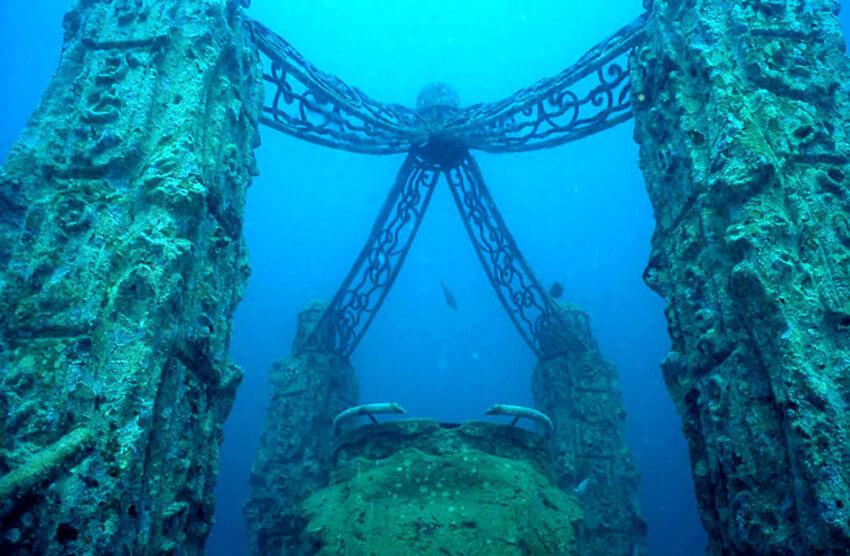
Home to prostitutes and pirates, Port Royal used to be the “Wickedest City on Earth”. Founded in 1518, it was a notorious port city and popular abode for English and Dutch privateers until their governments cancelled their commissions to confiscate Spain’s ships. As the privateers became pirates, the port became the hotspot for pirates from as far away as Madagascar.
An earthquake and resulting tsunami brought the Jamaican city to its end, submerging it beneath the sea. Excavations have yielded historical documents, various buildings, thoroughfares and actual preserved food.
The ruins are still accessible today, with travelers able to dive and explore the lost city. Various plans are in the pipeline to redevelop the town into a main tourist destination.
4. Dwarka – Mythical City of Lord Krishna, India
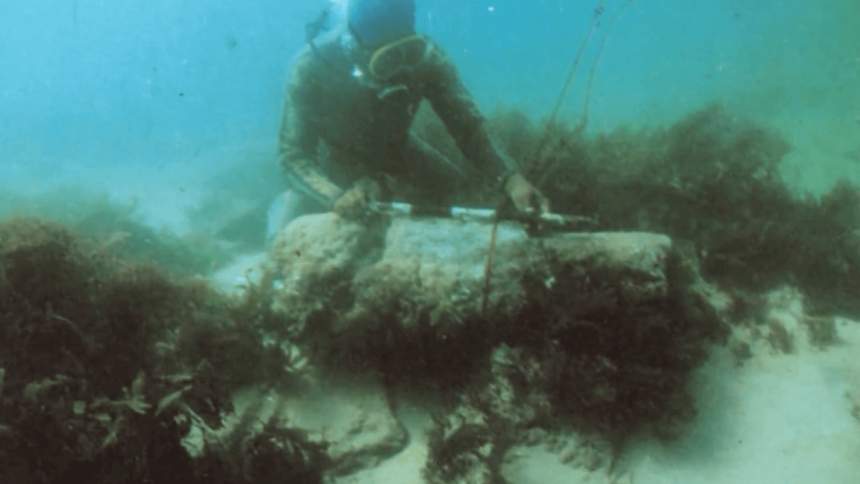
Among the most exciting archaeological discoveries made in India in recent years are those made off the coast of Dwarka and Bet Dwarka in Gujarat. Excavations have been going on since 1983. These two places are 30 km away from each other. Dwarka is on the Arabian sea coast, and Bet Dwarka is in the Gulf of Kutch.
According to ancient Sanskrit literature, the Lord Krishna founded the holy city of Dwarka, which subsequently got submerged under sea.
The detailed exploration and excavation of this sunken city was started in 1988. Marine scientists say archaeological remains discovered 36 m (120 ft) underwater in the Gulf of Cambay off the western coast of India could be over 9,000 years old. These findings suggest that Dwarka was one of the most busy port centers during the past on the west coast of India.
5. The Submerged castle in Lake Van, Turkey
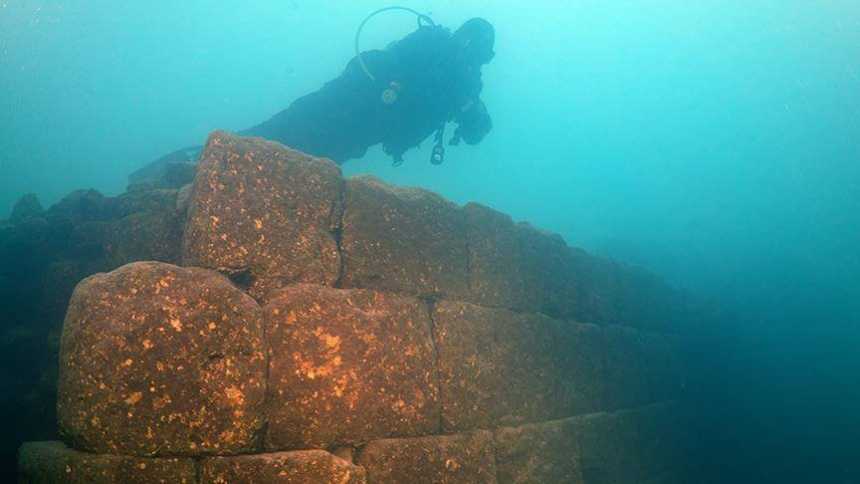
Sitting below the waters of the Middle-East’s second largest lake is a 3000-year-old castle. The castle spans around a kilometre, with walls standing as high as 3 or 4 metres, kept in good condition by the alkaline waters of the lake.
It is an Iron Age relic of the lost Urartu civilisation, also called the Kingdom of Van, which thrived in the region from the 9th to the 6th centuries BCE. This lost civilization once thrived in modern-day Turkey, Iran, and Armenia.
The archaeologists believe rising lake levels slowly submerged parts of the city over time. Large village ruins from this period can also still be found around the lake’s edges, above the current water level.
6. The Lost Underwater Mayan City of Samabaj, Guatemala
The city thought to possibly be Guatemala’s first city, is also believed to be over 2,000 years old. Considered to be one of the most important cities of the Pre-Classic Maya Civilization, this 4,300 square-foot (400 square-meter) area is more than 50 feet (16 meters) below Lake Atitlán’s surface.
Discovered in 1996, researchers have concluded that the ruins were originally an island until volcanic activity or a landslide sunk it 1700 years ago.
During the first expeditions, different pottery pieces were discovered, which motivated to continue exploring until something bigger appeared, the Mayan Atlantis
7. Shi Cheng – Lion City in Qiandao Lake, China

Beneath the water in the China’s Qiandao Lake lies a hidden treasure. Built during the Eastern Han Dynasty which lasted from around 25 to 200 CE, the regal city of Shi Cheng, was once the centre of politics and economics in the eastern province of Zhejiang.
In 1959, the valley in which the ancient city of Shi Cheng was located was flooded in order to create the man-made Qiandao Lake, which in turn would power a hydroelectric plant. This hid the city from view under over a hundred feet of water.
Much like the Machu Picchu ruins in Peru, this underwater Lion city remained forgotten until some renewed interest lead to its rediscovery in 2001, when the Chinese government organised an expedition to see what might remain of the lost metropolis. Despite being underwater, Shicheng has remained well preserved; the water actually protects it from wind, rain and sun erosion. To this day there are almost 300 arches still standing beneath the lake, along with a great number of intact buildings.
8. The submerged temples of Mahabalipuram, India

Mahabalipuram, a UNESCO World Heritage site located on the Tamil Nadu coast of India, is world-renowned for its cave temples, Pallava era art and architecture (8th century AD) & shore temple.
Local myth was that the shore temple was once part of a much larger temple structure which featured seven pagodas. Myth abruptly turned to reality in the wake of the devastating December 2004 tsunami in the Indian Ocean. As the water pulled out over 500m immediately before the tsunami, locals and visitors reported seeing long rows of straight stones before they were swiftly recovered. However, the tsunami had removed centuries of silt from the sites and uncovered several small statues and temples on the shoreline.
As a result of the eye witness reports, the Archaeological Survey of India and the Indian Navy conducted a survey of the site. This revealed a large series of buildings, walls and platforms that have been interpreted as forming a large complex.
9. The sunken city of Pavlopetri, Greece
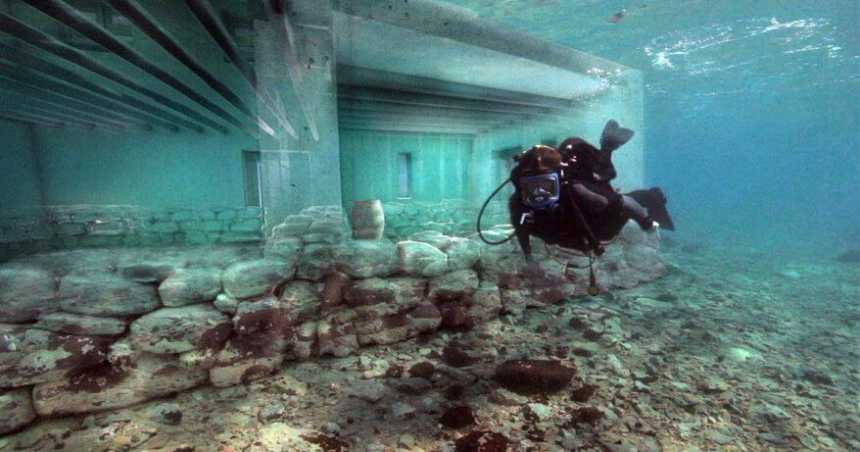
In the Peloponnesus region of southern Greece there is a small village called Pavlopetri, where a nearby ancient city dating back 5,000 years resides. However, this is not an ordinary archaeological site – the city can be found about 4 meters underwater and is believed to be the oldest known submerged city in the world.
Scientists estimate that the city was sunk in around 1000 BC due to earthquakes that shifted the land. However, despite this and even after 5,000 years, the arrangement of the city is still clearly visible and at least 15 buildings have been found.
This stunning city was discovered in 1904, revealing a wealth of information about the ancient civilization that once thrived there.
10. The Sunken City of Olous, Greece
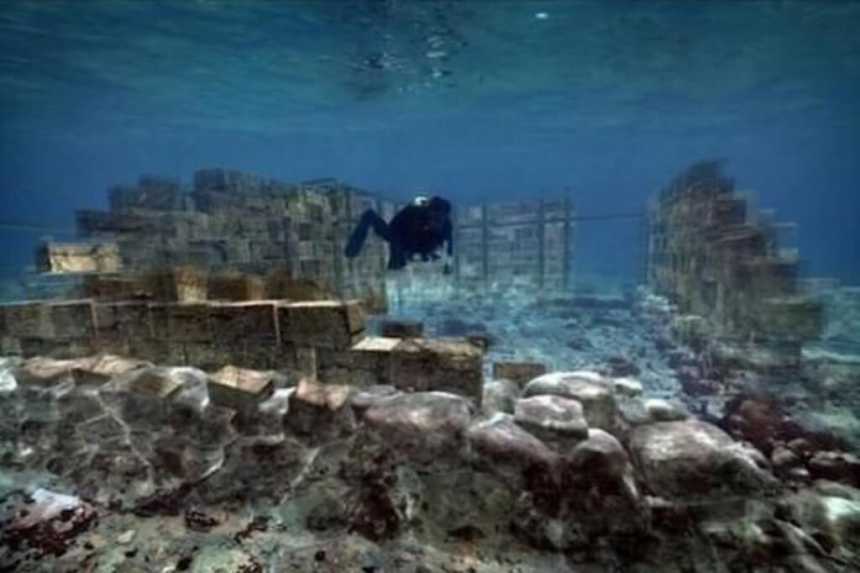
What was once part of the Minoan civilization, Olous is an underwater city that was once home to over 40,000 people. Between the 5th and 2nd century BC, Olous is thought to have reached its peak, making up one of around 100 Minoan cities that thrived around ancient Crete. The city had a famous Apollo sanctuary with the bronze group of Leto, Apollo and Artemis, which are exhibited today in the Archeological Museum in Heraklion.
Although no one knows exactly what happened to Olous, it is thought that it gradually submerged due to rising sea levels. Until today, the east of Crete is continually declining, while the west continues to rise and the entire island slowly migrates westwards.
Archaeologists have discovered mosaic floors depicting birds and fish, and the remains of two chapels associated with Olous still on dry land.
11. Atlit-Yam, Haifa, Israel
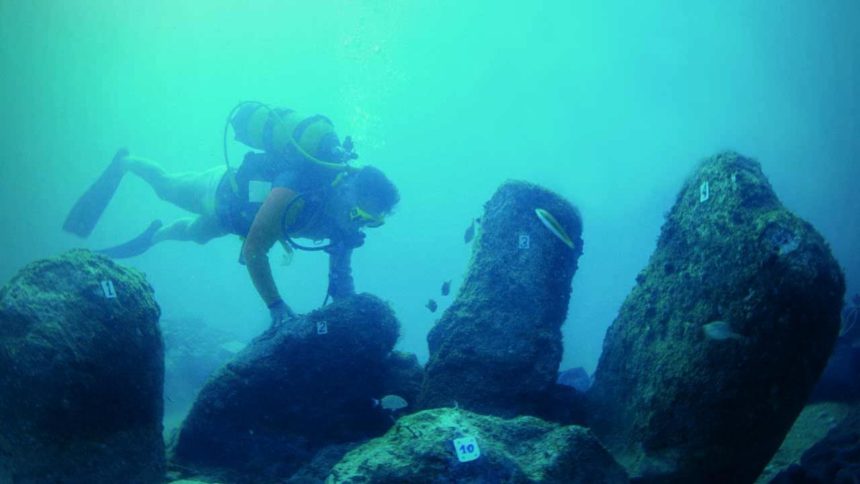
Off the coast of the village of Atlit lie the submerged ruins of the Neolithic site of Atlit-Yam. At 40,000 square meters, the site dates from around 7000 BC, making it one of the earliest and largest drowned settlements. There were no organised streets, so the site is described as a village rather than a city, but its people lived in spacious stone houses, complete with paved floors, courtyards, fireplaces, storage facilities and wells.
The site was discovered in 1984 by marine archaeologist Ehud Galili, and since then underwater excavations have unearthed houses, graves and wells. At the center of the settlement seven megaliths are arranged in a stone semicircle around a freshwater spring, which may once have been the site of water rituals.
Scientists believe that Atlit-Yam was abandoned suddenly as a result of a tsunami hitting the region, probably caused by a volcanic eruption in the Mediterranean area.
12. Heracleion – Lost Egyptian City
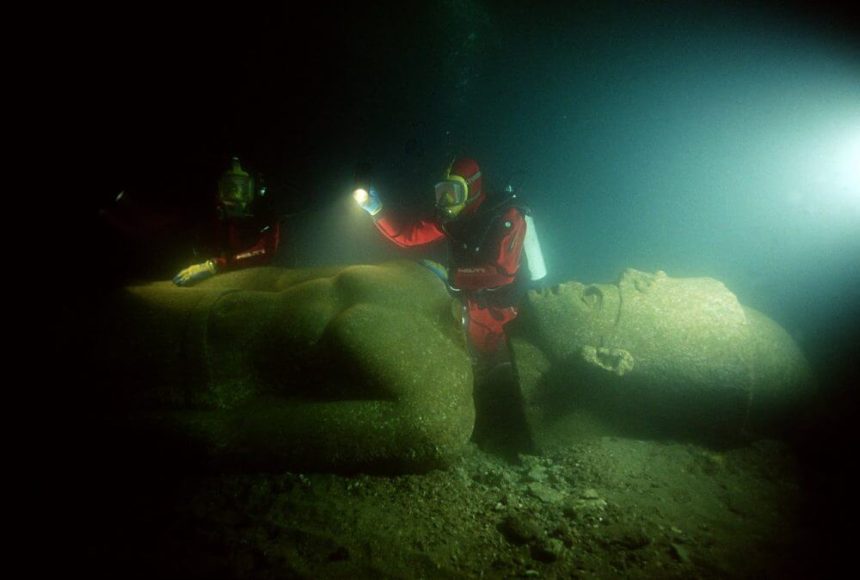
Once a bustling metropolis, this long-lost Egyptian city flooded, sank, and was forgotten — until archeologists rediscovered it.
Before the foundation of Alexandria in 331 BC, Heracleion knew glorious times as the obligatory port of entry to Egypt for all ships coming from the Greek world. It had also a religious importance because of the temple of Amun, which played an important role in rites associated with dynasty continuity. The city was founded probably around the 8th century BC, underwent diverse natural catastrophes, and finally sunk entirely into the depths of the Mediterranean in the 8th century AD.
Scientists still have little idea what caused the city to slip into the water nearly 1,000 years later, but it is thought that gradual sea level rise combined with a sudden collapse of the unstable sediment the city was built on caused the area to drop by around 12 feet.
13. The Ancient Underwater City in Fuxian Lake, China
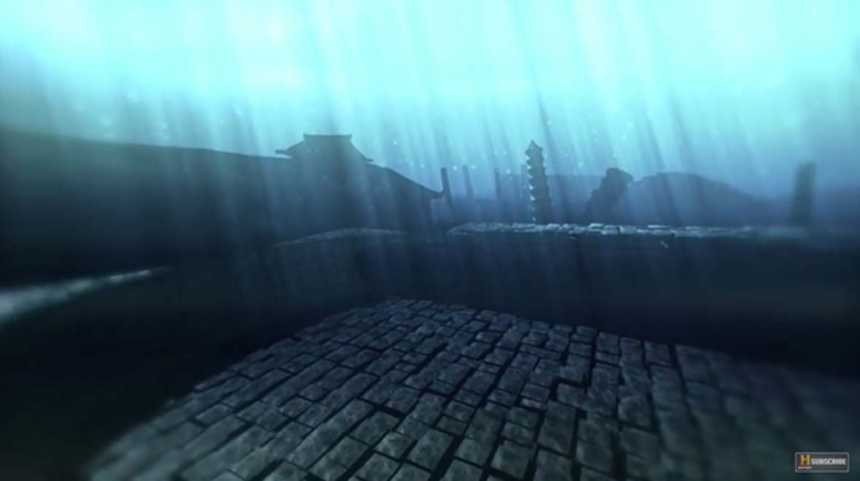
In 1992, a diver found an ancient underwater city at the bottom of the lake. Scientists have reached no final conclusions on this discovery yet. Some experts speculate the site might be the ancient city of Yuyuan, which disappeared mysteriously many hundreds of years ago.
In 2001, a team of marine archaeologists decided to explore the lake and reported seeing pyramid-like structures as well as other buildings and stone objects. They claim the ruins are over 2000 years old and belong to the lost civilization known as the Dian Kingdom.
It has been conjectured that the scale of the underwater city will not be smaller than the Maya Civilization. There are many unknown things about the underwater city. Further research is required to confirm its origin.
14. Villa Epecuen – Ghost town of Argentina

Back in the 1920s, a tourist village was established along the shore of Lago Epecuen, a salt lake some 600 kilometers southwest of Buenos Aires, Argentina. The resort town, named Villa Epucuen, soon had a railroad station, and it thrived for several decades, peaking in the 1970s with a population of more than 5,000.
Around the same time, a long-term weather event was delivering far more rain than usual to the surrounding hills for years, and Lago Epecuen began to swell. In 1985, the salty waters broke through an earthen dam, and Villa Epecuen was doomed. A slow-growing flood consumed the town until it reached a depth of 10 meters (33 feet) in 1993. The wet weather later reversed, and the waters began to recede in 2009.
READ MORE: 25 Lost Cities Forgotten by Time
Conclusion
Today underwater archeological research may reveal an entirely new chapter our story. To date, it is estimated that we have explored only 3 to 5 percent of the ocean floor. With so much territory still left to explore, we can only imagine the discoveries yet to come!
Now it’s up to you. What lost civilizations and sunken ruins do you believe should be studied more closely?


